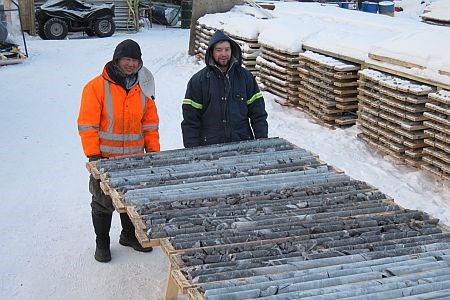KWG Resources, Spider Resources and Freewest Resources are the triumvirate of junior miners behind a monumental chromite discovery that will open up Ontario’s Far North and make the province a first-time producer of a highly strategic global mineral.
Now American iron and coal behemoth Cliffs Natural Resources has entered into the picture with a $240-million offer to take over Freewest (to be decided at a special shareholder meeting in late January) and assist KWG and Spider in developing its massive, high-grade chromite deposits in the James Bay Lowlands.
In a remote muskeg swamp, now known as the ‘Ring of Fire’, they discovered a commodity that’s never been found in any size or degree in North America.
Geologist Bob Middleton, director of Aboriginal and Regulatory Affairs for the Canada Chrome Corporation, a subsidiary of KWG Resources, said the tale of McFauld’s Lake is really one of a "series of accidents."
What began as a search in Ontario’s North for diamonds, turned into discoveries of copper and zinc that now has the potential to be the world’s biggest chromite mine, possibly by 2015.
Middleton, who was brought into the KWG fold as an exploration advisor, said there is enough tonnage at the McFauld’s deposits to see chromite production for 150 to 200 years.
KWG and Spider have been developing the flagship Big Daddy chromite property adjacent to two other chromite deposits, Black Thor and Black Label, owned by Freewest Resources. The three companies have formed an alliance. It was the discovery of diamonds at the current De Beers Canada Victor site which opened up the James Bay Lowlands to exploration.
The whole region was examined by detailed magnetics looking for the tell-tale bull’s eye anomalies that are indicative of kimberlite bodies, a mineral pointing to the presence of diamonds. Eight kimberlites and multiple volcanic massive sulphide (VMS) discoveries led to the KWG joint venture in the mid-1990s.
It was the beginning of a whole series of VMS discoveries - as many as 13 - by 2003.
A flurry of staking rushes and VMS exploration followed over the next three years. It led to a drill hole discovery on the KWG-Spider ground that hit a black mineral that was at first ignored but was soon realized to be chromite.
Cliffs officially entered the picture early last year with an investment in KWG to finance their exploration drill program for a 20 per cent stake.
Canada Chrome was set up as KWG’s subsidiary that will be the operating company to take care of the mining operations and building a 350-kilometre long ore haul railroad from McFauld’s to a Canadian National Railway junction near the northwestern Ontario village of Nakina.
Cliffs brings the money and 160 years' worth of expertise in building mines, establishing processing mills and laying tracks for an ore haul railroad estimated at a collective $1.5 billion.
"Cliffs is one of the world’s largest pellet and iron ore producers, so they know who the customers are who want to use this stuff," said Middleton, a graduate of Michigan Tech University, not far from Cliffs’ iron mines in northern Michigan.
The company is also a builder of railroads, having been involved in the development of the Labrador iron range in the early 1950s.
Chromite is considered a strategic mineral, especially by the U.S. defense establishment. It’s used to make missile components, armour plating and jet engines.
All of the chromite imported into North America comes mostly from Zimbabwe and South Africa, which mines 70 per cent of the world’s supply. Chromite is processed into ferrochrome, used in making stainless steel.
Ninety per cent of the world’s chromite is used in making stainless steel. China uses half of the world’s chromite.
The North American stainless steel industry consumes four-million tonnes annually.




